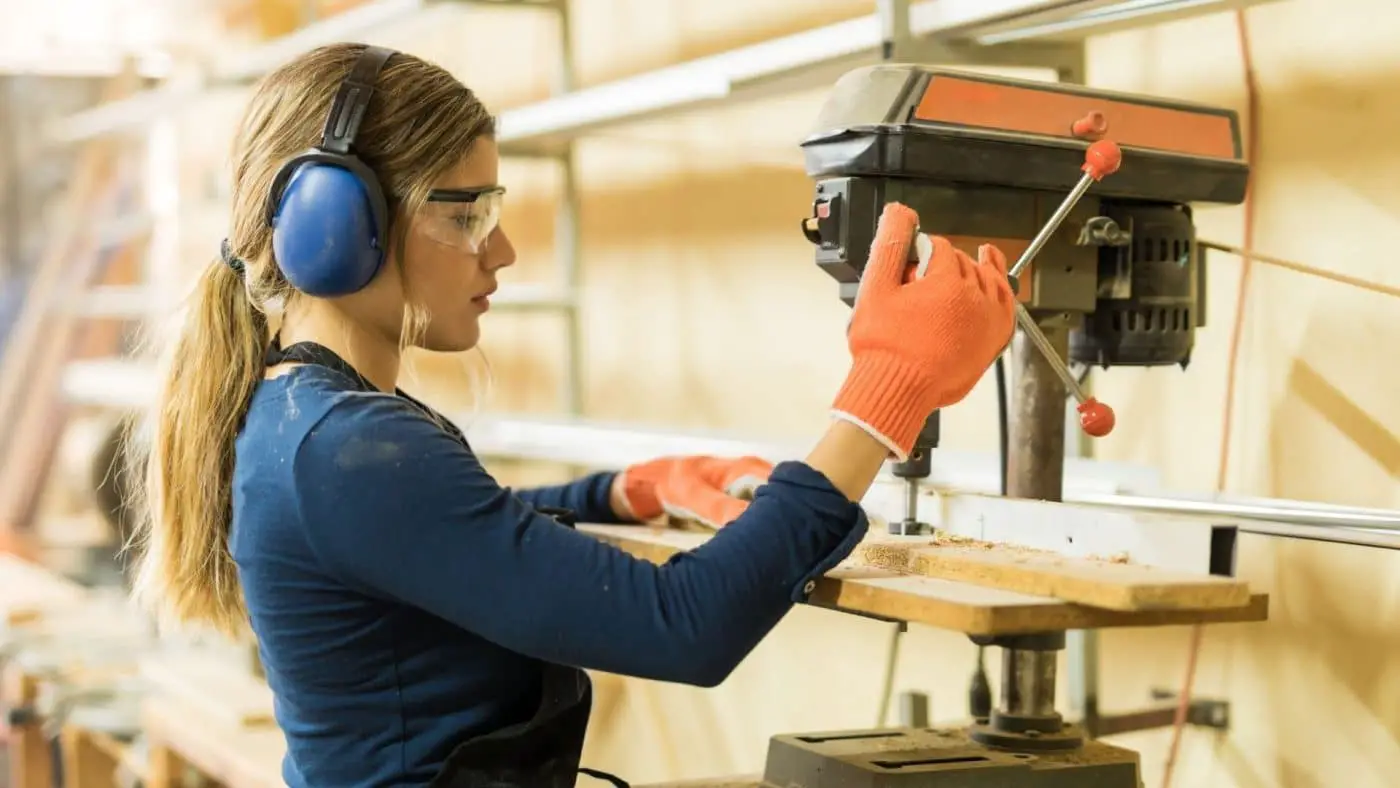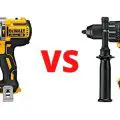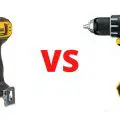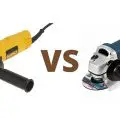Power Tools
What is the Best Drill Press for Woodworking
A drill press is one of those tools that any woodworker would want in their cabinet. This machine is used to drill holes of different sizes into the wood, metal, concrete, and other materials.
Buying your first drill press will leave you with more questions than answers if you don’t know what to look for. In this guide, you’ll learn how a drill press works and how to pick the best one for your shop.
How Does a Drill Press Work?
The drill press features a motor that turns a series of belts on the inside of the tool. These belts, in turn, rotate a spindle and chuck that’s holding on to a drill bit. The size of the drill bit determines the size of the hole, whereas the drilling speed decides how quickly the hole is created.
Apart from drilling holes, a drill press is useful for removing chunks of waste in large mortises. Some carpenters swear by it, even consider it better for some jobs than a hollow chisel mortiser. Drill presses also play a major role in the construction of hand tools. For example, the precise saw nut holes in a handsaw are made using a drill press.
How to Buy the Best Drill Press for Woodworking
Consider the two different types.
A drill press can either be free-standing or bench-mounted. The latter type is sometimes referred to as a portable drill press since you can move it from bench to bench.
A free-standing drill press offers unrivaled drilling power, loads of stability, and the flexibility to bore larger mortises. However, it’s not exactly garage-shop-friendly and usually requires spacious workshops.
You can always get a bench-mounted drill press if you don’t have much room. Its smaller footprint and lighter build allow you to fit it into tight corners and carry it to a different location.
Look at the swing
In a drill press, the swing is usually marked by measurements like 16 ½ inches, etc. This is the measurement from the center of the chuck to the metal post holding up the drilling section.
The swing capacity is essentially a drill press’s ability to drill holes into the center objects of varying diameters. As a rule of thumb, a drill press with a moderately-sized swing is ideal because it can handle different-sized wood stock.
The standard swing size for a free-standing drill press is 16 ½ inches. However, bench presses tend to have much lower swing capacities, so they usually measure 10 – 12 inches and occasionally up to 15 inches.
Make sure you get the right fit for your project, which you do by ensuring the swing capacity is enough to work within the diameter range of your wood stock.
Check out the quill stroke/spindle travel.
Quill stroke, or spindle travel, refers to the maximum distance the spindle can move downwards. It basically refers to how deep your spindle can go before bottoming out. The shortest quill stroke any serious woodworker should tolerate is 4 inches. Anything less than that would be seriously limiting.
A drill press with a longer spindle travel will let you drill deep into mortises using either auger or Forstner bits.
Does the bed tilt?
The bed refers to the platform on which you place your wood stock. It should obviously be firm and stable, but tilting ability is a better feature to look out for. The most basic drill presses will have a bed that tilts to an angle of at least 45 degrees. More advanced drill presses have beds that tilt in all four directions, giving you a wider variety of complex angles to choose from.
If you make items like Windsor chairs, then the tilting ability of the drill press should be a huge consideration.
Features like size, depth stops laser modules and variable speed.
Though they fall under auxiliary features that won’t necessarily affect the quality of the outcome, it’s nice to have some of these.
For instance, quick-adjust depth stops are infinitely easier to work with. Lasers keep you drilling with robotic precision, while a variable speed motor gives you greater flexibility to work with different materials.
As for size, some woodworkers may prefer larger tables, whereas dedicated machinists will find smaller tables more appealing.
You shouldn’t spend too much on any of these features if you don’t need them, but if you can get a feature-packed drill press without going over budget, go for it!
Drill Presses to Buy This Year
WEN 4214 Variable-Speed Drill Press
There’s a lot to like about the WEN 4214, whether you’re just an enthusiastic hobbyist or a full-time professional. The drill press has a 2-3 HP 120V variable-speed motor to achieve a maximum RPM of 3,200. That means you can select any speed between 580 and 3,200 RPM—all with equal amounts of torque—to work with different types of wood stock.
The spindle travel is the only unpleasant feature on the 4214. However, its incapacity aside, it features a lockable linear depth stop, which allows you to drill with great accuracy. This drill press is, therefore, capable of repeating identical drilling measurements.
The swing capacity of the 4212 is 12 inches, which is suitable mostly for machinists and small-time woodworkers. It comes with a Class III laser module, a table roller extension, and a 5/8-inch chuck and key (as well as all the tools for assembly.
WEN 4208T 5-Speed Benchtop Drill Press
Another small but great option is this WEN 4208T, a bench-mounted drill press with a 5-speed motor, 8 inches of swing capacity, and a 6.5-inch by 6.5-inch worktable that tilts up to 45 degrees in both directions.
It measures 23 inches from the base to the top, and the base is a sturdy 7 inches by 11 inches. The maximum spindle travel is only two inches, reaffirming its suitability for small projects. Its 2.3A induction motor allows you to choose from five speeds starting from 740 RPM to 3140 RPM.
It is easy to assemble and relatively cheap for a drill press, making it a great first purchase for the aspiring woodworker.
Why You Should Trust Us
At Woodworking Tool Guide, we know one size doesn't fit all! We cater to every woodworker, from beginner to pro, with insights and recommendations tailored to your skill level, project needs, and budget. We take the guesswork out of choosing the right tools, whether you're tackling your first crafting a masterpiece for the ages. So grab your chisel, join our community, and let's build something amazing together!
Woodworking Tool Guide wasn't just born, it sprouted from a seed of passion for the craft. What started as a joyful exploration blossomed into a trusted online haven for fellow enthusiasts like you. We pour our love into meticulously chosen review selections, meticulous hands-on testing, and lab-backed insights, all to empower you with reliable, comprehensive information you can build on. So, grab your tools, trust our guidance, and let's build something beautiful together!
Passion-Driven Expertise
Our journey started with a shared love for woodworking. The team behind the Woodworking Tool Guide is comprised of individuals who are not just writers but passionate woodworkers themselves. This shared enthusiasm ensures that our content is crafted with a deep understanding of the craft and an authentic appreciation for quality tools.
Top Tool Guides Online
Woodworking Tool Guide has rapidly ascended to become one of the premier online destinations for tool guidance. Our commitment to excellence and the accuracy of our information has positioned us as a reliable source for both beginners and seasoned woodworkers seeking trustworthy advice on the best tools for their projects.
User-Centric Approach
Our content caters to every woodworker, from rookies just starting out to seasoned pros tackling intricate projects. We tailor our insights and recommendations to your skill level, project needs, and budget, ensuring you find the perfect tools to match your unique woodworking journey. So step into your workshop, grab your tool belt, and let Woodworking Tool Guide be your trusted companion as you craft your masterpieces.
Continuous Support and Innovation
Woodworking is an ever-evolving craft, and so is our commitment to supporting you. We are dedicated to bringing you the latest information on woodworking tools, techniques, and trends. Our team is actively working to expand our content and bring you more valuable insights, ensuring that you stay well-informed in your woodworking adventure.
Hands-On Experience
Ditch the endless research rabbit hole! At Woodworking Tool Guide, we believe in actionable advice, not armchair analysis. We get our hands dirty, putting every tool through its paces in real-world woodworking scenarios. Whether it's the precision of a table saw, the versatility of a router, or the tactile satisfaction of a handplane, we test for performance, durability, and user-friendliness. No more sifting through dry specs – we deliver practical insights you can trust to transform your woodworking dreams into reality.
Woodworking Tool Guide isn't just a review site, it's your trusted companion on the sawdust-filled path to woodworking mastery. Our expert team, led by veteran David Jones, meticulously tests and explains tools in terms you understand. We cut through the jargon, bias, and confusion with real-world insights and honest evaluations. Join our passionate community, where decades of experience, cutting-edge knowledge, and shared love for the craft come together to guide you every step of the way. So grab your chisel, buckle up, and let's embark on this exciting woodworking adventure, together!






